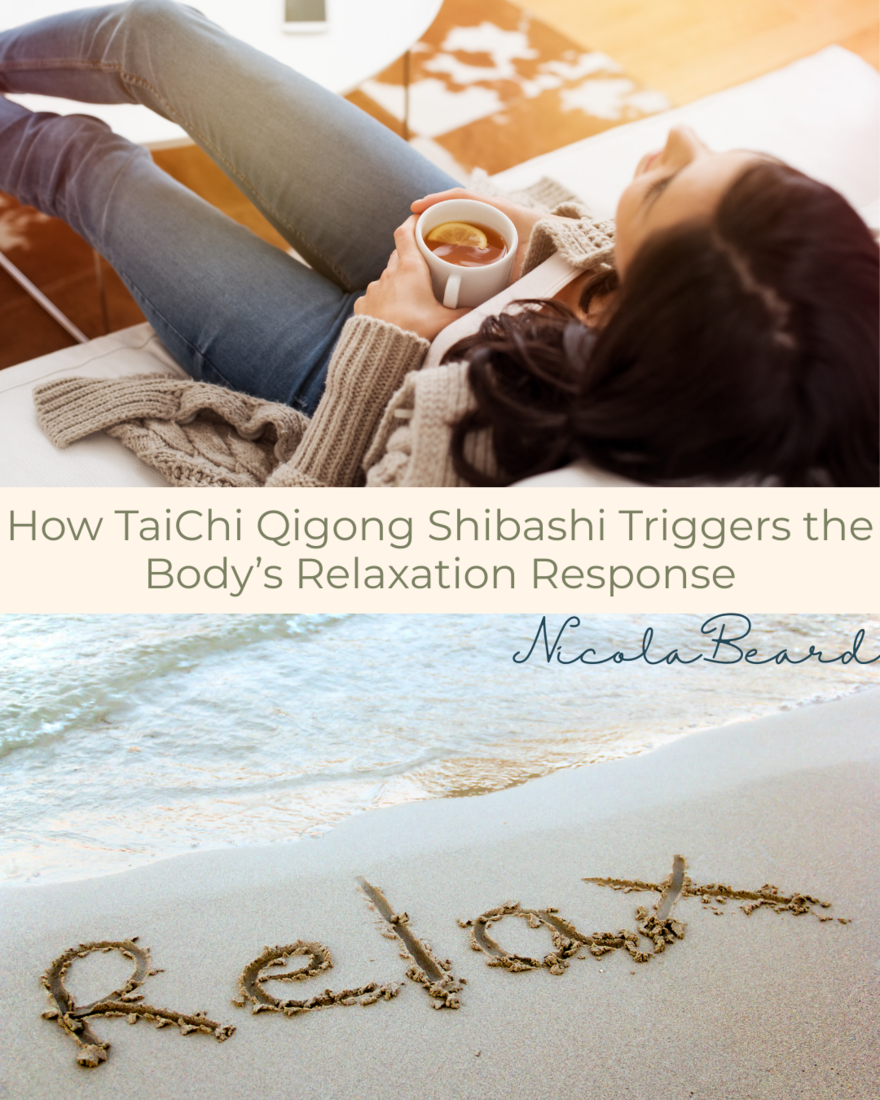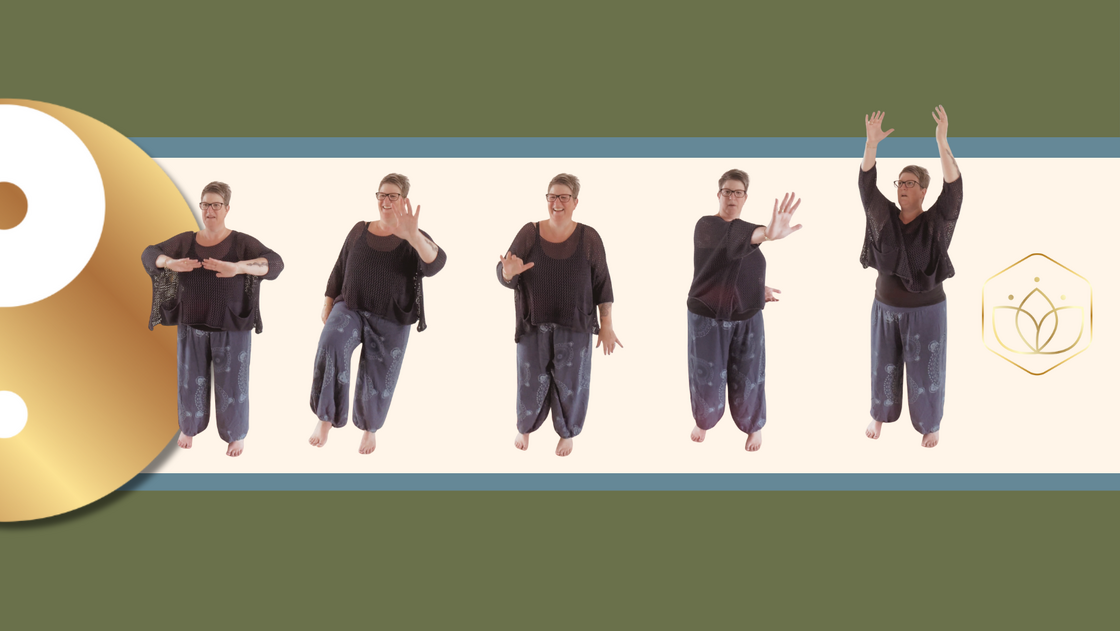
Stress is one of the biggest challenges of modern life. We rush from one responsibility to another, often without time to pause. Our phones keep us connected 24/7, work follows us home, and even rest can feel like another task on a long to-do list. It is no wonder that so many of us feel ‘wired’ but tired, unable to switch off even when we desperately want to.
What is happening inside our bodies when we feel like this is not weakness or lack of discipline. It is our nervous system doing its job. The body is designed to respond quickly to threat, but in the 21st century, threats look very different to what our biology expects. We are no longer running from sabre-toothed tigers, yet our brains and bodies react in the same way to traffic jams, deadlines, constant emails, family demands, and financial pressures.
This is where Shibashi, a gentle form of Tai Chi Qigong, can make a huge difference. By combining slow, rhythmic movement with steady breathing, it directly encourages the body’s natural relaxation response. It does not require willpower, complicated routines, or hours of practice. Instead, it taps into the parasympathetic nervous system, the part of our biology designed to help us recover, repair, and find balance.
In this blog, we will explore what the parasympathetic nervous system is, why so many of us struggle to access it, and how Shibashi provides a safe and effective way to bring calm back into our lives.
The Parasympathetic Nervous System Explained
The nervous system has two main modes. The first is the sympathetic nervous system, often called fight or flight. This is what kicks in when you sense danger. Heart rate increases, muscles tense, digestion slows down, and blood pressure rises. All of this helps you to respond quickly to a threat.
The second is the parasympathetic nervous system, often called rest and repair. This is where the body recovers. Heart rate slows, blood pressure lowers, digestion improves, and muscles release tension. Sleep, healing, and hormone balance depend on the parasympathetic system doing its work.
Both systems are vital. We need to be able to respond to danger, but we also need to return to recovery once the danger has passed. The problem in modern life is that many people never fully switch off their stress response. The sympathetic system remains active long after the meeting is over, the bills are paid, or the arguments have ended.
The parasympathetic system is not a luxury. It is the foundation of health. Without enough time in rest and repair, the body gradually wears down. Fatigue, anxiety, digestive issues, hormone imbalances, and sleep problems all become more common. Learning how to encourage the parasympathetic system is not about becoming soft or lazy. It is about supporting the natural cycles of effort and recovery that keep us alive and well.
How Stress Hijacks the Body
We often underestimate how much chronic stress affects us. The nervous system is designed to fire up quickly when needed, but it is also designed to switch off once the danger has passed. In the modern world, there is rarely a clear end to stress.
Deadlines roll into the next project. Notifications ping at all hours. Parents juggle childcare and ageing relatives. People living with ADHD find it especially difficult to down-regulate because their brains are already more sensitive to stimulation. Women in perimenopause experience fluctuating hormones that amplify stress signals and make sleep harder. Those recovering from long Covid or living with chronic fatigue know that even small amounts of stress can wipe them out for days.
When stress becomes constant, the body stays stuck in fight or flight. The adrenal glands pump out cortisol. Muscles remain tense. The mind struggles to switch off, leading to overthinking, worry, and insomnia. Digestion slows, leading to bloating, discomfort, and nutrient deficiencies. Over time, the immune system weakens and small health issues become chronic.
The reality is that most people do not need more intensity in their lives. They need a reliable way to tell the body it is safe. This is where Shibashi offers something unique.
Shibashi as a Gentle Reset Tool
Shibashi is a set of 18 flowing movements that combine elements of Tai Chi and Qigong. It is simple to learn, accessible for beginners, and suitable for almost everyone regardless of fitness level. What makes it powerful is not just the movements themselves, but the way they are performed.
Slow, Rhythmic Movement
When we move slowly and rhythmically, the nervous system receives signals of safety. Fast, jerky movements are associated with threat. Smooth, repetitive movements mimic the natural rhythms of walking, breathing, and rocking, all of which soothe the body. This is why rocking calms babies and steady pacing calms adults. Shibashi uses this principle through graceful, repeated patterns that settle the body and mind.
Steady Breathing
Each movement in Shibashi is paired with slow, even breathing. Inhale as the arms rise, exhale as they lower. Deep, diaphragmatic breathing stimulates the vagus nerve, which is the main highway of the parasympathetic nervous system. As the vagus nerve is activated, heart rate slows, digestion improves, and muscle tension decreases. The body shifts into rest and repair.
Flow and Rhythm
Repetition is not boring in Shibashi. It is the key to its calming effect. The brain does not need to concentrate on complex choreography, so the mind gradually quietens. The repeated flow creates a meditative state. Unlike sitting meditation, which some people find difficult, Shibashi combines movement with mindfulness, making it easier for restless minds to settle.
Together, these three elements work like a switch, gently guiding the nervous system away from fight or flight and into rest and repair.
Science Meets Calm
Research supports what Shibashi practitioners already know through experience. Studies show that slow, mindful movement practices like Tai Chi and Qigong reduce cortisol, lower blood pressure, and improve sleep quality. They also enhance mood, reduce anxiety, and improve quality of life for people with chronic conditions.
One study found that regular practice of Qigong improved heart rate variability, a measure of how well the body balances stress and recovery. Higher heart rate variability is linked to greater resilience and better health. Another study showed improvements in fatigue and mental health in people living with long-term illness.
Unlike high-intensity workouts, which can sometimes increase cortisol and leave people feeling more depleted, Shibashi works in harmony with the body. It builds energy rather than drains it. The movements release muscle tension, improve circulation, and gently stretch the joints. Emotionally, the practice provides a sense of calm, safety, and self-connection.
Shibashi is not about burning calories or pushing harder. It is about rebalancing the nervous system so that the body can heal, repair, and recharge.
Everyday Application
The beauty of Shibashi is its simplicity. You do not need a gym, equipment, or hours of free time. Just 10 to 15 minutes of practice can make a difference. Consistency is more important than intensity. Practising daily, even for a short time, keeps the nervous system topped up with calm signals.
Imagine ending your day with Shibashi. Instead of collapsing into bed with a racing mind, you take a few minutes to move slowly, breathe deeply, and let the day go. Sleep comes more easily because your body has already shifted into rest mode. Or picture starting the morning with Shibashi, giving your nervous system a calm foundation before the chaos of the day begins.
It can also be used as a reset during the day. A short practice between meetings, after school runs, or during a lunch break helps prevent stress from building up. Over time, this prevents the nervous system from becoming chronically overloaded.
Conclusion
Stress is unavoidable, but living permanently in fight or flight is not sustainable. The parasympathetic nervous system exists for a reason. It is the body’s natural recovery mode, the place where healing, repair, and balance happen.
Shibashi provides a simple, gentle, and effective way to access this state. Through slow movement, steady breathing, and rhythmic repetition, it triggers the relaxation response and helps the body rebalance. Unlike intense exercise, it does not add to the stress load. Instead, it supports resilience, calm, and long-term health.
If you are living with constant stress, ADHD, perimenopause, or post-Covid fatigue, Shibashi offers a way back to balance. You do not need to fight your body. You can work with it, guiding it gently into the state it was designed to return to.
At The Shibashi Sanctuary, I teach both online and in-person classes to help you bring this practice into your life. Whether you have 10 minutes a day or want to join a full class, Shibashi can fit into your routine and make a real difference.
Subscribe to my mailing list for regular tips, resources, and guided sessions to support your nervous system rebalance.
Stress may be part of life, but calm can be too.

